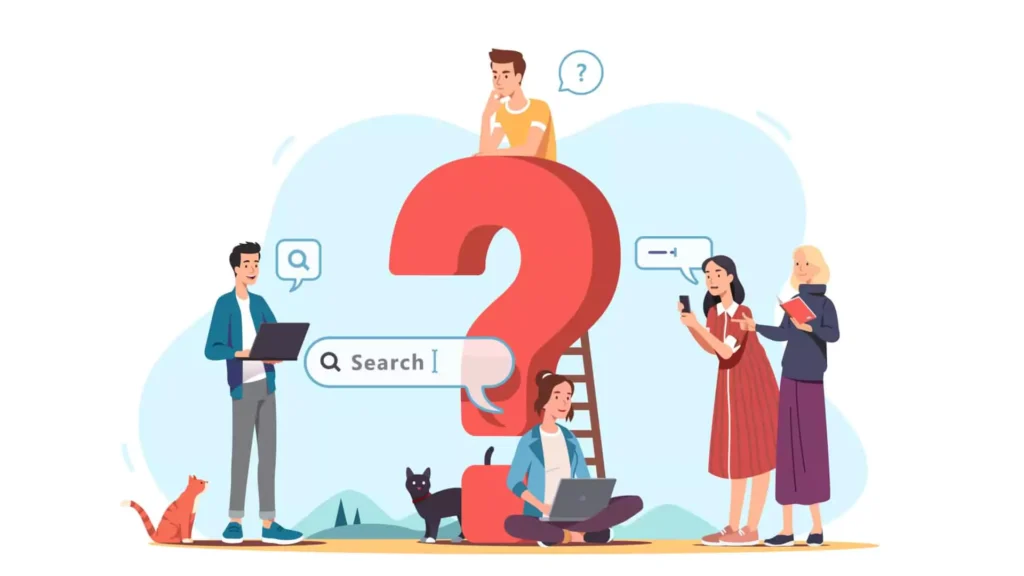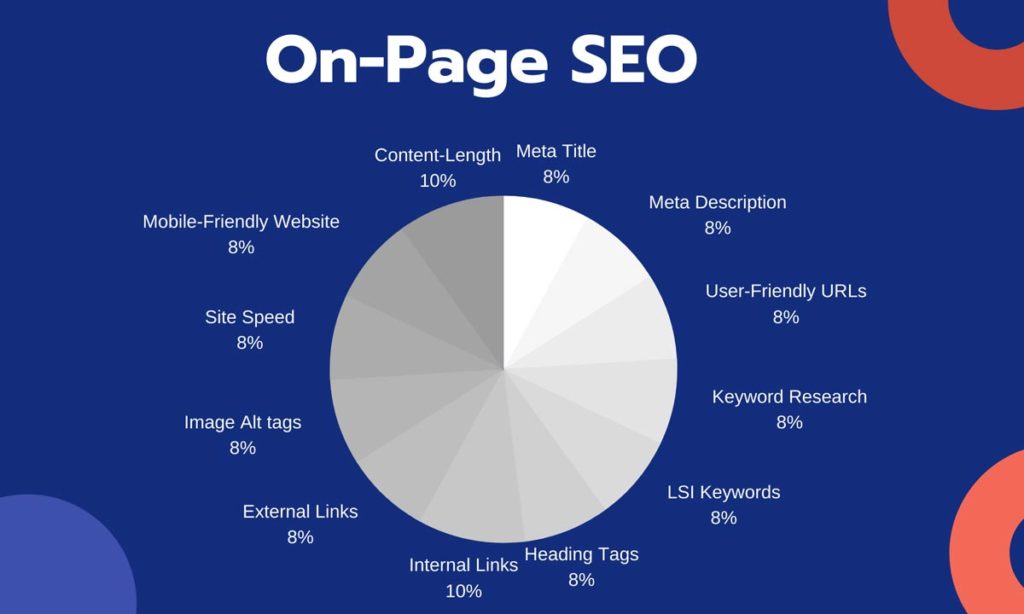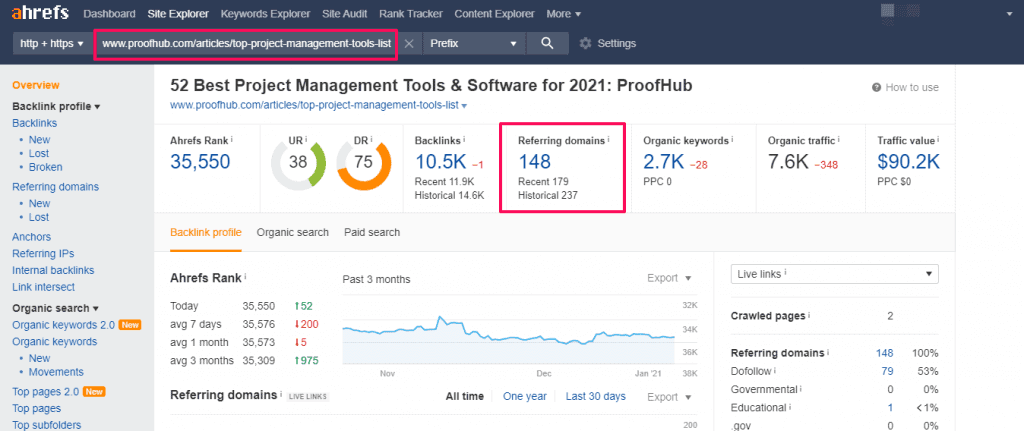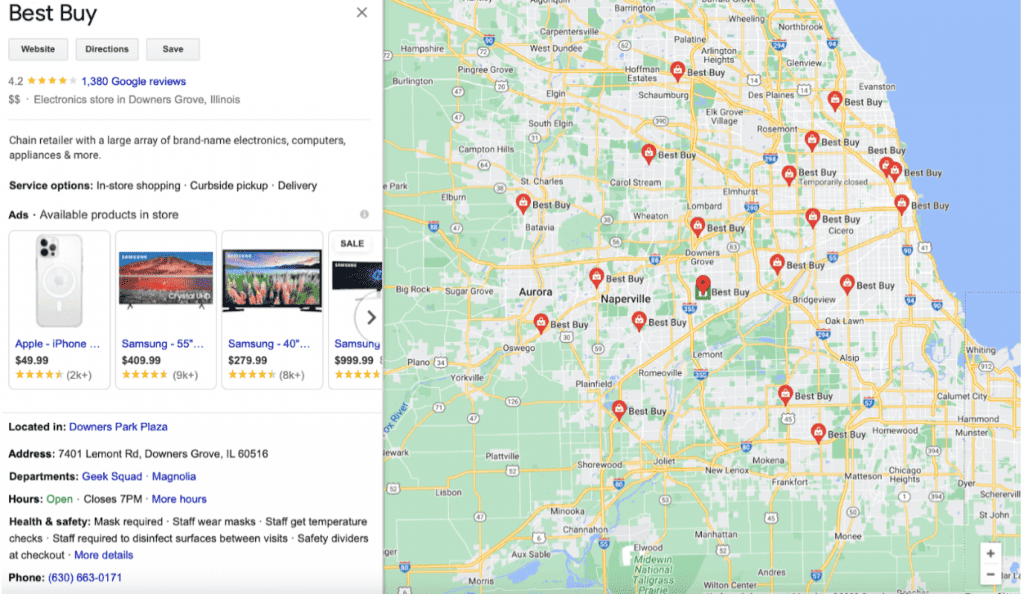How to Get Your Website Ranking on Google
Are you trying to make your website ranking appear high in Google's search results? You're not alone. With over 192 million websites online, mastering Google's ranking factors is crucial for driving organic traffic.
In this guide, I'll walk you through all the essential strategies for boosting your site's rankings and visibility on Google. We'll dive deep into technical SEO, on-page optimisation, link building, and more — everything you need to outrank your competition.
Ready to dominate those search engine results pages (SERPs)? Let's get started!
Table of Contents
Understanding Google's Ranking Factors

Before we get into the nitty-gritty details, it's essential to understand how Google ranks websites. The search engine uses a highly complex algorithm with hundreds of ranking factors.
Some of the most important factors include:
- Quality of content
- Keyword relevance
- Website architecture and technical optimisation
- Mobile-friendliness
- Page loading speed
- User experience signals like bounce rate and dwell time
- Backlink profile (quantity and quality of inbound links)
Google aims to provide the best possible results for each search query. So, your site needs to check all the right boxes to climb up those rankings.
The Technical Side of SEO

Think of technical SEO as the foundational layer that supports your whole strategy. If you don't get the technical elements right, all your other efforts could be for nought.
Here are the key areas to focus on:
Website Architecture
How your website is structured impacts user experience and crawlability for search engines. Aim for a logical, siloed architecture with a flat hierarchy.
Use descriptive URLs, heading tags, proper navigation, and an XML sitemap to make your site easily crawlable. Over 50% of web traffic comes from mobile, so having a responsive, mobile-friendly design is non-negotiable.
Indexing and Crawling
For your pages to rank, they must first be crawled and indexed by Google. Control the crawling and indexing of your site through:
- Robots.txt file
- XML sitemaps
- Meta robots tags
- Canonical tags
- hreflang tags for multilingual sites
Ensure any lower-quality or duplicate content is no-indexed or canonicalised to avoid keyword cannibalisation issues.
Page Speed
Did you know that as page load time goes from 1 second to 10 seconds, the probability of a visitor bouncing increases by a whopping 123%?
Fast-loading pages are not just better for users, but they're also a confirmed Google ranking signal. Run your site through tools like Page Speed Insights, GTmetrix, or WebPage Test to identify speed bottlenecks.
Compressing images, leveraging browser caching, and hosting with a quality provider can significantly reduce load times.
Security and HTTPS
In 2014, Google announced HTTPS as a ranking signal. An SSL certificate encrypts data transmitted between the browser and server, providing a secure connection.
Beyond the SEO benefit, having HTTPS gives users confidence in the legitimacy and safety of your site. Set up 301 redirects from HTTP to HTTPS to avoid duplicate content issues.
On-Page SEO Mastery

Once your technical foundation is set, it's time to optimise individual pages to rank for your target keywords. This process is known as on-page SEO.
Keyword Research
The cornerstone of any strong SEO campaign is thorough keyword research. You want to identify high-value, relevant keywords with search volume that your audience uses.
Go after a mix of head terms (short, broad keywords) and long-tail terms (more specific phrases). Keyword tools like Ahrefs, SEMrush, and Google's Keyword Planner can provide insights into search volumes and competition levels.
Content Creation and Optimisation
Content is king when it comes to SEO. But you need to do more than churn out thin, low-quality pages — Google is more intelligent than that.
Your content needs to be comprehensive, in-depth and laser-focused on providing value to users. Thoroughly answer their search query better than any other page out there.
When optimising each piece of content:
- Include your target keyword in the title tag, meta description, headings, URL, and body copy (don't overdo it though)
- Craft compelling title tags and meta descriptions to improve CTRs
- Use descriptive header tags (H1, H₂, H₃, etc.) to break up content
- Optimise images with Alt text and file names
- Add internal links to other relevant pages
- Format content for readability with short paragraphs, bullet points, etc.
The key is to match search intent — give users exactly what they're looking for, and search engines will reward you.
Schema and Rich Results
Marking up your content with schema.org structured data can help you achieve rich results in SERPs. Those enhanced listings often include star ratings, FAQs, recipe info, and more.
Not only do rich results look more enticing to searchers, but they can boost your CTRs significantly. According to one study, pages with rich results enjoyed an 182% increase in clicks compared to regular listings.
User Experience Signals
Do you know those user experience (UX) metrics we mentioned earlier, like bounce rate, time on site, etc.? Google uses those heavily to determine relevance and quality.
You want to create a website experience that keeps people engaged. Entice users to click through to other pages, subscribe to your email list, watch videos, download resources, etc.
Simple things like breaking up walls of text with visuals, having a clear call-to-action, and improving page speed can dramatically impact engagement.
The Power of Link Building

Now, we get into one of SEO's most challenging (yet crucial) aspects — building high-quality backlinks. In the eyes of Google, inbound links from other sites act as “votes” that validate the quality of your content.
Link building has evolved significantly over the years as Google has cracked down on spammy tactics like:
- Participating in private blog networks (PBNs)
- Buying links from low-quality sites
- Mass commenting on irrelevant blogs
Instead, your focus should be on earning links through legitimate means like:
- Guest posting on industry blogs and publications
- Creating ego-bait content that influencers want to link to
- Pursuing non-paid mentions and profiles on authoritative sites
- Finding and replacing broken links on other sites
- Promoting share-worthy content via social media and email outreach
- Monitoring and removing negative/spammy links through disavow files
It's a labour-intensive process, but earning high domain authority backlinks is essential for increasing rankings. Be willing to play the long game.
Link Analysis and Clean-up
An often overlooked aspect of link building is analysing and cleaning up your existing backlink profile. Just because a site links to you does NOT mean that link is helpful.
Low-quality or irrelevant inbound links could hurt your rankings through link spam penalties. That's why it's crucial to:
- Regularly monitor your backlink profile using tools like Ahrefs, SEMrush, etc.
- Identify and disavow any spammy, low-quality links pointing to your site
- Reach out and try to remove incredibly toxic or unnatural links
- Build up a more substantial backlink portfolio over time
Audit and prune your backlinks every few months to maintain a squeaky-clean link profile.
Advanced SEO Tactics

Once you've mastered the core SEO elements, you may want to explore some more advanced strategies, like:
Local SEO
If you have a physical business location or serve a specific geographic area, local SEO can help you rank better for “near me” searches. Key tactics include:
- Claiming and optimising your Google Business Profile listing
- Getting listed on major online directories like Yelp, Yellow Pages, etc.
- Building local citations and backlinks from nearby sites
- Creating location-specific landing pages and content
Video and Visual Content Optimisation
Search engines increasingly prioritise visual and video content in the SERPs—Optimise videos with keyword-rich titles, descriptions, transcripts, and closed captions.
Use infographics, charts, and other visual elements on your pages too. Images and videos increase engagement signals and dwell time.
Featured Snippets and Voice Search
You've probably noticed featured snippets in search results – those handy text boxes that directly answer a query. Optimising for featured snippets is huge, with over 20% of queries now being voice searches.
Structure content using bulleted or numbered lists, accordions, and direct question/answer formats. Monitoring for new snippet opportunities using SEMrush or Ahrefs is helpful, too.
International and Multilingual SEO
If you have an international audience or run multilingual sites, there are special SEO considerations to keep in mind:
- Use hreflang tags to indicate the language and regional targeting of each URL
- Create localised content tailored to the dialects, cultural nuances, and search intent of each region
- Optimise for local search engines like Baidu in China or Yandex in Russia
- Pursue inbound links from country-coded top-level domains (cc TLDs) and local sites
- Consider hosting and server locations that are geographically close to your target market
Effective international SEO allows you to rank well and provide a customised experience for users in every corner of the globe.
Technical Audits and Ongoing Optimisation
SEO is more than just a one-and-done kind of endeavour. With over 500 algorithm updates per year, you must constantly monitor your site's health and performance.
Conduct regular technical SEO audits to identify:
- Crawl errors and indexing issues
- Broken links and redirect chains
- Mobile usability problems
- Page speed bottlenecks
- Duplicate or thin content
- Toxic backlinks to disavow
- Areas for on-page optimisation
Use enterprise-level tools like Screaming Frog, DeepCrawl, and WebCEO to audit all aspects of your technical and on-page SEO thoroughly.
Tracking, Measurement, and Analytics
You can't improve what you don't measure. That's why it's critical to set up comprehensive analytics and tracking from day one.
Google Analytics, Google Search Console, rank tracking tools, heatmaps, session recordings – leverage every data source possible.
Dig into metrics like:
- Organic traffic and rankings
- Top exit pages
- Conversion rates
- Page engagement (dwell time, scroll depth, etc.)
- Backlink acquisition over time
This complex data will highlight your SEO strengths, weaknesses, and areas for improvement. It helps you quantify impact and make more intelligent, more strategic decisions.
It's a Marathon, Not a Sprint
Mastering SEO and getting to the top of Google takes serious work and commitment. There's no shortcut to ranking success.
Stick to these core principles:
- Always put user experience first by creating precious, highly-optimized content
- Focus on earning high-quality links through legitimate white hat tactics
- Make technical optimisation, page speed, and mobile-friendliness non-negotiable
- Be patient, persistent, and willing to learn, test, and adapt your strategy
With consistent effort, you can climb the rankings and drive a steady stream of free, passive, and highly targeted organic traffic from Google.
So what are you waiting for? Roll up your sleeves and start dominating those SERPs!
FAQs About Website Ranking on Google
How long does it take to rank on Google?
There's no set timeframe, but generally, you're looking at 6-12 months minimum for new sites. It depends on your niche's competitiveness, how well you execute SEO, the authority of your domain, and other factors. Stick with it and be patient.
Should I focus on SEO or paid ads?
It doesn't have to be an either/or. Savvy marketers use a blend of SEO and paid channels like Google Ads. SEO drives long-term compounding traffic, while paid ads offer faster results. I'd recommend prioritising SEO for long-term scalable growth.
How important are backlinks compared to on-page SEO?
Both are critical pieces of the puzzle. On-page ensures your content is optimised and user-friendly. But you'll need a solid backlink portfolio to rank, too. Aim to master both and prioritise links from authoritative, relevant sites.
What's more significant is content quality or content length?
Quality over quantity. In-depth, thorough content tends to rank better, but only if it's high-quality and crafted for humans, not search engine bots. Don't resort to fluff or keyword stuffing.
How does voice search impact SEO?
Voice is a growing trend shaping the future of SEO. Optimising for conversational queries, featured snippets, FAQs, and a question-and-answer format can help capture voice search traffic. Mobile and local optimisation are critical, too.
